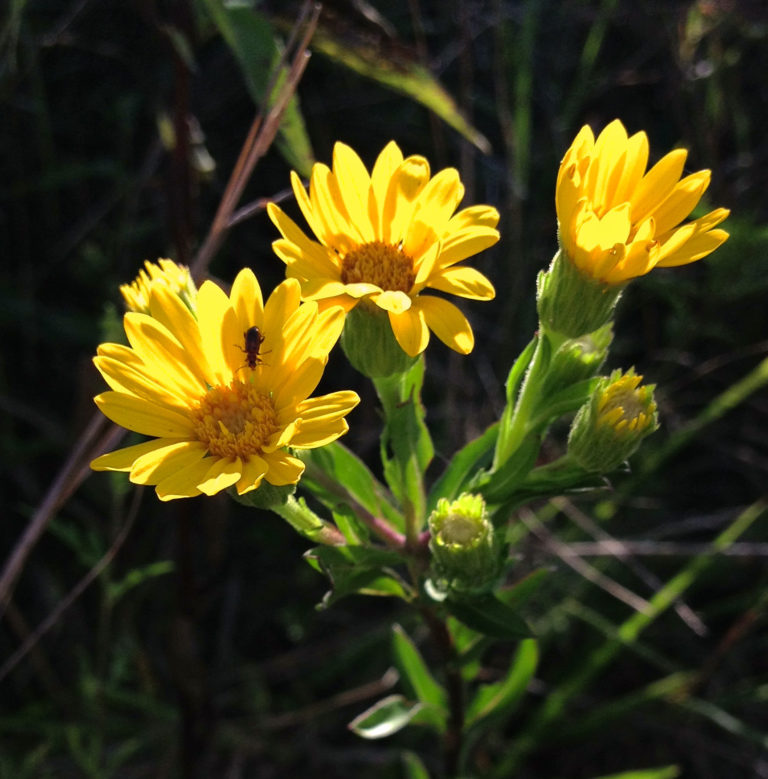Maryland Goldenaster is a Southeastern short-lived herbaceous perennial about 2.5 feet tall which occurs on roadsides, in dry, open, rocky woods and sandhills throughout NC. It thrives in full sun and well drained soils and is considered drought tolerant. Each plant is short-lived, but persists in the garden by seeding out and/or producing new plants at the ends of short rhizomes. Early on there is a basal rosette of spatula-shaped leaves, followed in late summer through fall by stems with small, alternate, sessile leaves and silky hairs which tend to disappear as the season progresses. Flowers are borne in terminal clusters, with both disk and ray flowers bright golden yellow. Honored in 2018 as the NC Botanical Garden’s Wildflower of the Year! May be included in fire-managed plantings. Asteraceae family.
NURSERY HOURS
Wednesday: 10-4 Thursday: 10-6 Friday-Saturday: 10-4 Sunday: 12-4
Chrysopsis mariana

Key Info
Scientific Name: Chrysopsis mariana (L.) Elliott
Common Names: Maryland Goldenaster, Silkgrass
Family Names: Asteraceae (Composite, or Daisy Family)
Plant Type: Herbaceous perennial
Flower Color: Golden yellow
Special Characteristics: Reported to be deer resistant., Attracts butterflies, Candidate for fire management, Tolerates drought
Additional Info
Habit: Rosette with upright stems emerging as the season progresses to about 2.5' tall; fibrous roots; stems and leaves have numerous silky hairs,
Height: 2.5'
Spread: 2'
Soil Conditions: Well drained. Can tolerate sandy as well as clay[-based, well drained soils from acid to neutral pH.
Leaves: Stem leaves are 1-2 inch, bright green, stalkless, oblong to lanceolate leaves. Rosette leaves are larger, broadest above the middle, rounded and with wooly hairs.
Flowers (or reproductive structures: Bright golden yellow disk and ray flowers.
Fruit: Reddish brown achene in fall
Natural Distribution: Dry pinelands, sandhills, open rocky woods, old fields, roadsides.
USDA Hardiness Zone: 4 to 8
USDA Wetland Indicator Status in NC: UPL
Pollination: Bees, butterflies, other insects
Propagation: By seeds or division.
